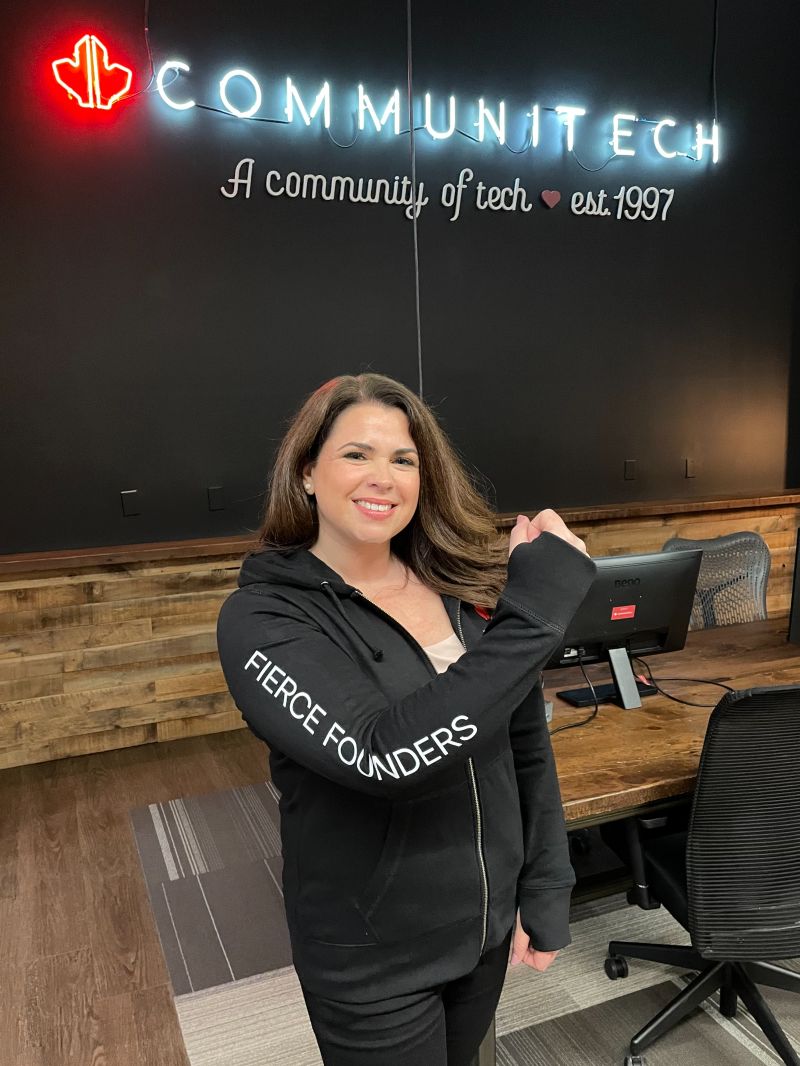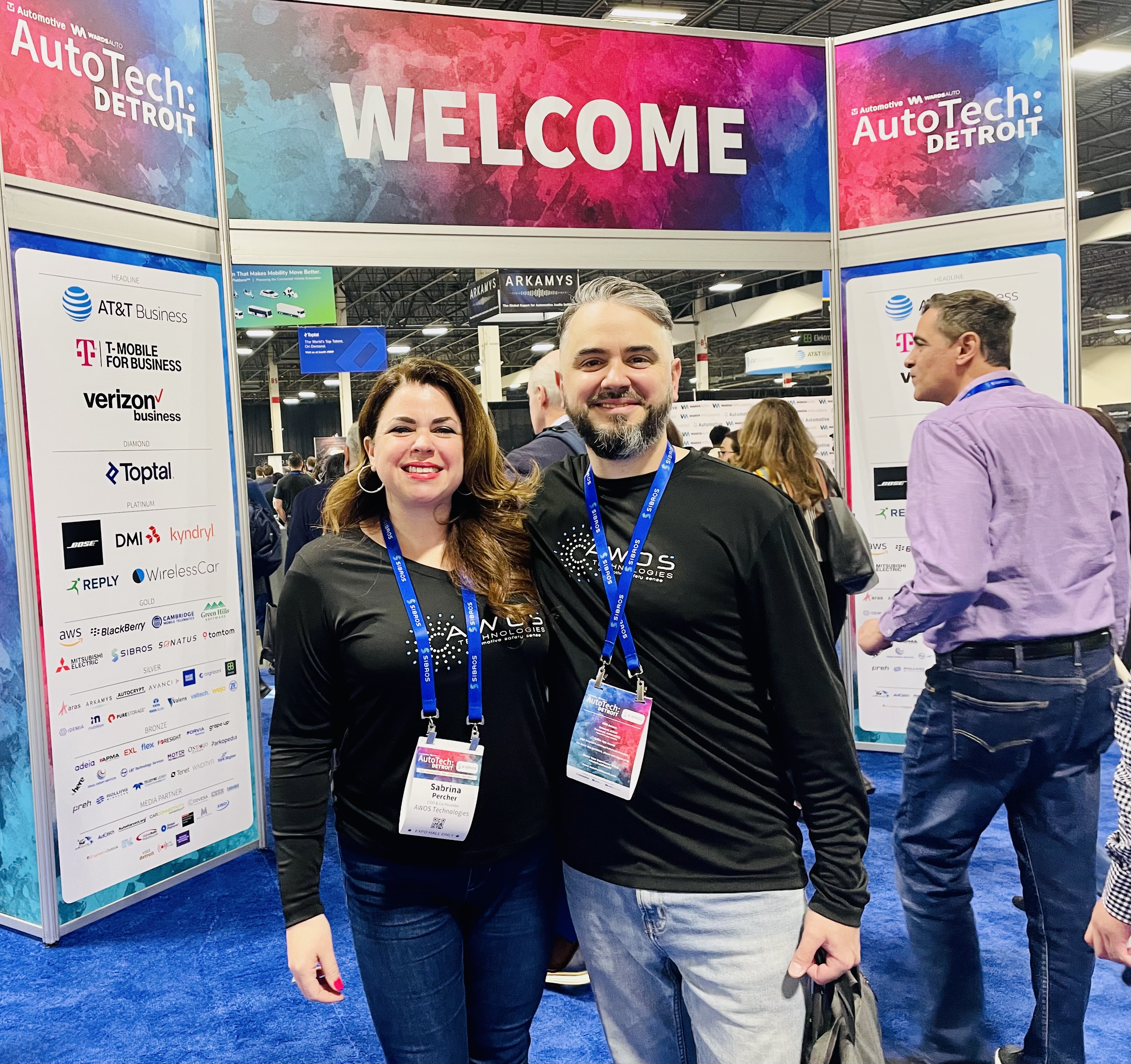A cargo ship crashed into the Francis Scott Key Bridge in Baltimore, causing it to collapse and several vehicles to plummet into the river below. Just a few days earlier, a police officer and a firefighter tried to rescue a driver from a submerged vehicle in North Carolina. And in mid-February, shipping billionaire Angela Chao accidentally drove her vehicle into a lake and died.
These headlines are only a few recent incidents raising awareness of how quickly a car can become submerged in water, leaving little time for the driver to react and take the right actions to escape.
“It’s heartbreaking,” said Sabrina Percher, co-founder of AWOS Technologies. “It’s very difficult to see this happen.”
For Percher, these incidents hit hard. In 2009, Percher and her husband moved to Saudi Arabia for work, where he was caught in a flash flood and rescued from his vehicle. They learned, however, that hundreds of others had lost their lives.
“This was an experience that really shook us,” said Percher. “We discovered that this was a global problem that happens to thousands of people every year.”
On a mission to prevent similar incidents from happening again, Sabrina Percher, Mike Percher, Shawn-Patrick Percher, and Aram Amassian co-founded Automatic Window Opening Systems (AWOS) Technologies. Over the span of several years, in partnership with vehicle submersion expert Gordon Giesbrecht, they developed and tested AWOS, a vehicle escape system that automatically lowers windows and connects to emergency services, giving drivers and passengers a way to escape.

AWOS Technologies co-founder Sabrina Percher
“Cars aren’t designed to save us in a submersion. We only have one minute to get out of the vehicle. There’s just no time to waste,” said Percher. “People are human. We panic. Our minds go blank and we end up wasting precious time and risk drowning when what we need to do is get out immediately.”
Vehicle submersion is happening more frequently because of the changing climate and natural disasters, and it doesn’t just happen when someone drives off the road or into a lake. Whether a vehicle plunges into a body of water, a sinkhole, or gets caught in a flash flood, every second counts.
“A car equipped with AWOS is always on alert and takes the human guess work out of the equation to make sure all occupants can get out safely,” said Percher. “It immediately detects submersion, quickly opens the windows and gives exit instructions. It also notifies emergency services so people save precious time and focus on getting out of the car.”
Modern vehicles are equipped with the latest technology to make commutes smoother and more enjoyable. Drivers have access to sensors, cameras and computer systems, but vehicles aren’t designed to handle incidents involving water. Shatter-resistant side windows, now standard in all new vehicles sold in the U.S. since 2020, can become barriers, keeping people trapped inside.
When you don’t know what actions to take, it can be easy to panic. Some of the most common mistakes drivers make while trying to get out of a submerged vehicle include trying to open the doors, trying to kick out the windshield and placing cell phone calls for help.
“Consumers want to be protected,” said Percher. “They need to feel safe in every situation that could happen.”
Instead of leaving it up to drivers to find an escape route, AWOS is urging automakers to proactively incorporate targeted safety features to protect drivers and passengers from submersion-related injuries or death.
“We have accepted seatbelts and airbags to provide safety in an accident,” said Percher. “Likewise, in submersion incidents, vehicles should not trap occupants but instead aid in their escape to prevent fatalities and injuries.”
New initiatives are underway that highlight the importance of addressing submersion safety. In 2023, the European New Car Assessment Program (Euro NCAP) and Australasian New Car Assessment Program (ANCAP) introduced submersion safety ratings due to the growing use of laminate windows, failure of electronic systems, and increasing occurrences of rising water on roadways.

AWOS Technologies co-founders Sabrina Percher and Shawn-Patrick Percher
A recent campaign by the Queensland Reconstruction Authority, Your Car Can’t Protect You From Floodwater, also highlights the limited protection vehicles offer in submersion situations and offers a word of caution to drivers and a call to action for the automotive safety community. There are also calls for regulatory support in the United States in adopting life-saving technologies like AWOS for passenger vehicles.
“There’s a solution,” said Percher. “It needs to be adopted.”
As demand grows for more safety solutions in modern vehicles, AWOS is working to bring its technology to market to protect drivers and passengers. The startup is part of OVIN at Communitech, which works with founders to provide access to resources and tools to accelerate the development and commercialization of next generation vehicle technologies.
AWOS has also taken part in Communitech Fast Track Cities, which links municipalities and industries with founders to investigate solutions that influence Canadian urban areas and transportation networks. AWOS also participates in ElevateIP, a federally funded, nationwide project designed to provide tools Canadian startups need to understand, strategically manage and leverage their intellectual property. Percher also is a member of Communitech Fierce Founders, receiving hands-on support, customized content and access to a network of other women and non-binary founders.
“Our participation in Communitech programs is broadening our exposure to new markets in the transportation space,” said Percher. “We want to get AWOS in front of manufacturers and take a major step toward our mission of saving lives.”
As the AWOS team works to bring its technology to market, Percher has a critical reminder for anyone in a sinking vehicle: remember the acronym SWOC – seat belts off, windows open, out immediately, children first.

